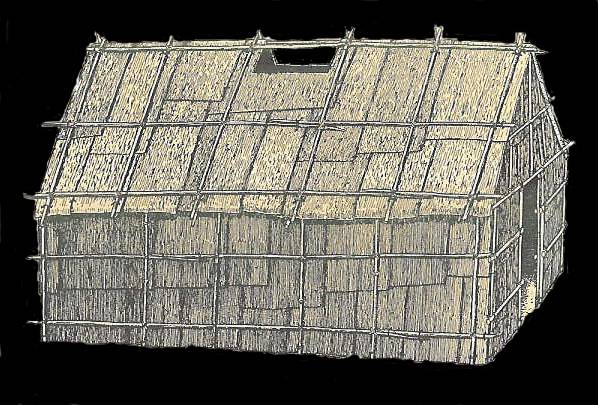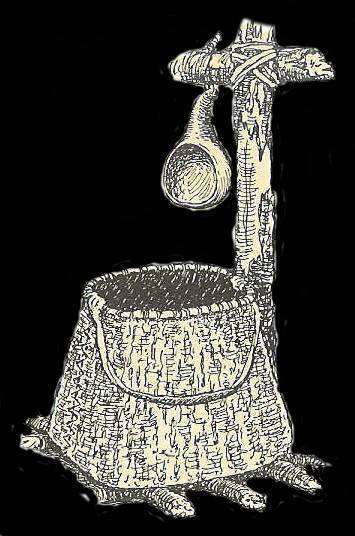

The Lënape were an agricultural society which supplanted their crops by hunting and fishing.. We raised many varieties of food crops including pumpkins, corn, beans, and squash. We gathered berries, nuts. and edible flowers and plants from the forests which surrounded our villages. We tapped maple trees and collected the sap to make maple syrup and maple sugar. Deer, bear, elk, beaver, and turkey, were but a few of the animals we hunted. We fished and collected oysters, clams, and mussels along the coastline and in the rivers. We made flour from a variety of sources and so had different types of bread which we baked
We also traded extensively with other nations across North America. We traded with the Great Lakes nations for copper, and our contacts with the Creeks led to the Creeks adopting our game of Pahsahmën. (Pahsahmën is most likely the basis for our modern game of football.) At Lënape archeological sites in Pennsylvania, there have been found rye grass seeds. Rye grass only grows naturally in the Idaho/Montana area.
Being an agricultural society we lived in permanent villages built next to large sources of water. We built irrigation systems to water our fields, and our homes were permanent structures. Our houses were of two distinct styles, a round, dome shaped structure and a large gable roofed style. The smaller dome shaped house, called a miexaskwigamèk, was usually occupied by childless couples, single individuals, and such. It had a pole frame and the extrior walls were of made of cat tails or bull rushes cut and trimmed smooth. The rushes are laid tightly against the side of the frame and “clamped” between the willow courses with another willow branch. They are then sewed through and secured with strands of inner basswood bark.
A second type of domed house was a temporary structure used as tents. These were similar to the miexaskwigamèk, except that the exteriors walls were contructed of woven mats. These mats could be secured in place fairly quickly, and taken down, transported, and reused. The portability of these “tent mats”, along with the ease and simplicity of frame construction made these “tents” excellent emergency shelters and "portable" shelters when traveling or on hunting expeditions.
The largest and most common style of traditional house was the gable roofed house. These are large rectangular houses normally measuring 15 feet in length by 12 feet in width. The “soffits” are about 4 1/2 feet above the ground while the peak of the roof is about 8 1/2 feet above the ground. The method of construction is a pole frame covered with sheets of elm bark. There is one door, and generally no windows.
The interior walls are lined with decorated mats which serve the dual purpose of decoration and insulation. The floors are covered with mats or hides to act as rugs. It is not uncommon for these houses to have two levels of platforms along the inside walls. As with all buildings, there is a centrally located fire pit with a smoke hole directly above it.


In our language wikëwam (pronounced wee - KUH - wahm)is a generic term meaning house or home. Wigwam and other similar words are merely corruptions of the word wikëwam.




The dance begins with men only, arranged in pairs facing each other. The women come out and choose a partner by getting between the two men, facing the one she chooses.
The couples now dance facing each other, one dancing forward, the other backwards. When the song changes, they whirl around and switch positions. They do not hold hands.